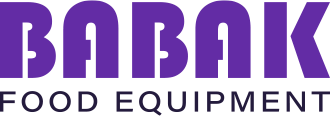Kitchen hoods are a core component in commercial kitchen facilities. The heat, grease, and smoke created from your heavy-duty cooking equipment can create an uncomfortable and unsafe working environment if not properly dealt with. As a result, hood vents keep air clean, protecting your staff, guests, and your investments.
Selecting and installing the appropriate kitchen hood requires a lot more consideration than one might think. However, the right consultation and careful planning will simplify the process.
Considerations
What will you need to consider before installing your hoods?
Firstly, the dimensions of the hood system must cover all equipment that is needing ventilation. Therefore, all commercial kitchen equipment required must be identified and measured. Secondly, it is important to allocate a realistic budget for the installation. Installation can cost approximately $950-1,200 per square foot, with most hoods measuring between 10-14 feet on average. Finally, these systems require regular cleaning and maintenance for optimal performance, and for safety. For this reason, it is critical to maintain strict cleaning and maintenance protocol.
Legal Requirements
Consider and fulfill all regional legal requirements. Obtain all licenses and permits based on local regulations and code prior to installation. This is a must before any further work can be done to your facility. Utilize resources and checklists provided by your city (usually found on their website). The restaurant owner is responsible for meeting these provisions.
Types of Kitchen Hoods
The next step is to determine which type of kitchen hood your facility will need. The commercial kitchen equipment your establishment utilizes will determine the type of kitchen hood required. Generally, your kitchen will require one, or both of the following types: Type 1 and Type 2 hoods.
Type 1 – Exhaust Hoods
Exhaust hoods collect and remove grease and smoke from medium to heavy-duty cooking equipment, such as fryers, ranges, griddles, broilers, ovens, and skillets. For this reason, exhaust hoods are commonly referred to as “grease hoods”. These hoods keep ducts and upblast exhaust fans cleaner between service and maintenance appointments. As a result, this will keep the system running smoothly. Regular cleaning and maintenance scheduling is of the utmost importance as avoiding this step can cause grease fires in your facility.
Type 2 – Condensate Hoods
Condensate hoods collect and remove steam, vapor, heat, and odors from equipment. These hoods are ideal for equipment that does not produce grease, such as dishwashers, steam tables, and some ovens. Condensate hoods collect contaminated air and remove excess heat. As a result, this creates a more comfortable environment for those working in the kitchen. Type 2 hoods are not required for light-duty commercial kitchen equipment. This includes light-duty convection ovens, hot holding equipment, toasters, microwaves, and rice cookers.
Request A Service
Kitchen hood systems are a critical component in commercial kitchen facilities. Trained professionals have the knowledge and expertise to install kitchen hoods correctly and safely. This is not where you want to take chances doing it yourself, or hiring inexperienced personnel – the risks far outweigh the potential short-term savings.
Request an installation or maintenance from the trained professionals at Babak Food Equipment. Over 20 years of industry expertise makes us your trusted source for helping kitchens establish success in this competitive market. Contact us today!


